A brand’s first gravel bike is big news. And when that brand is Enve, a company that knows a thing or two about making products that blaze beyond the pavement, you know it’s going to be worth a closer look. The bike in question is the Enve MOG, a single-syllable sound straight out of Middle Earth. Here’s Enve’s explainer:
“MOG is a noun, verb, acronym, and unequivocally a state of mind for those who push the boundaries of distance and rolling exploration. There’s no road too long, no course too tough for those willing to MOG.”
Intriguing, but we wanted to learn a lot more than the marketing materials revealed. So we arranged an interview with Enve’s Marketing Manager, Neil Shirley, and the MOG’s Lead Engineer, Kevin Nelson to dive into the genesis of Enve’s debut gravel bike, from the challenges of keeping things simple, to not giving in to gimmicks and why storing stuff in your frame is the future.
Pete: Hey Neil and Kevin, thanks for finding the time to chat.
Kevin: Thanks, Pete - pleasure.
Neil: Me too. Always happy to chat with AC!
Pete: To kick things off, I think if you told people that the MOG was Enve's first gravel bike, they'd probably be slightly surprised. Why did it take so long?
Neil: Well, I think many of us in the office probably would've preferred the MOG in front of the Melee! We ride gravel bikes a lot, and road, naturally, but when we go big on the weekends, it's on the gravel bike. And, of course, we have our own gravel event in the GRODEO combined with the Builder Round-Up here at ENVE.
We're definitely passionate about our gravel and have some very firm ideas and opinions on what a gravel bike needs to be at this point for performance, versatility, and all these things. So, the gravel bike needed to come, but because of certain design elements that went into it, we could only bring it to market now.
Kevin: Yeah, and largely just that Melee was a much quicker evolution of the work we had put into the Custom Road, and so it was a much, much easier product to complete. Whereas, with the MOG, because of our personal interest in gravel and being there are a lot of great bikes in the market already, we wanted to do something special. And that was going to require some time.
Pete: Compared to the gravel bikes you've been riding until now, what did you want to bring to the market that you didn't see elsewhere?
Kevin: It's many of the same challenges everybody's trying to address. We like to do things that have a real, meaningful advantage for the riders while at the same time keeping it simple too. And so that can be a design challenge in and of itself. For the MOG, the in-frame storage was a must-have on our list of things we wanted to do. The tire capability was a must-have. Those are two serious design challenges to do well.


Pete: Taking the in-frame storage capability as a start, why did you feel that was so important?
Kevin: Maintaining a clean presentation has been a guiding principle for our bike design and all of our design in general. For example, that's why we have internal cable routing. And we've tried to make that as easy to work with as possible, all so your riding experience, your on-the-bike experience, is improved. There are a few things with the MOG that we pushed with that, but we wanted to keep it simple. So with the in-frame storage, we wanted to provide extra or alternative storage options and make it easily accessible. And we wanted those features not to impact the frame design cosmetically or everything.
Pete: Can you give an example of a design challenge that came with making the storage?
Kevin: When you look at the execution of the door, for example, that represents six months of design effort. We went through more than 50 iterations of design for the execution of that door. It looks straightforward, and it is, but distilling that down is a challenging design effort. But it's so rewarding when you give it to somebody, and they look at it and largely know how to use it. Plus, it uses simple, serviceable parts, so it's built for the long haul.
Pete: I believe there's also something interesting going on with the internal cables within the storage.
Kevin: Yep, inside the storage bay, there's a Velcro strap that holds the cables down, which is just this beautifully simple concept in the scheme of things. It provides a bit of padding for the cables and the stuff you're putting in there. Those are the kinds of details that hopefully elevate the MOG to a next-level experience.

Pete: How did you arrive at the 0.6 liter storage space limit?
Kevin: We had a minimum list of things we wanted to put in there, and some of those things, like a tube, and a CO2 canister, create a minimum space. And then we had maximum space considerations. What size hole did we feel like was going to be good? Aerodynamically, what tube shape was going to be functional? And then triangulating on what could happen and the capability of putting in two bags plus a little bit. It was kind of like, "Do we have what we need? Do we have more? Is it still easy to use?"
Neil: And it's so adaptable. It can help you carry more or stow what you're already carrying in a more streamlined fashion. We know that for riders heading out on a bigger trip or even embarking on an Unbound 200, there's going to be the need for other stuff in addition to the in-frame storage, which is why there's the ability to integrate a top tube bag along with some clean integration for that. But yeah, the cargo bay does provide everything you need for that emergency kit.
Pete: You also include two bags to help people get started with the new storage space, right?
Neil: Sure do. We designed the bags to complement the storage. One goes up the downtube; one goes down. It's pretty neat. Some riders will use both, and some will only use one - it's totally up to the rider, and it works great either way because the bags strap in, so they don't rattle in the frame.

Pete: Stepping back a bit to look at the gravel scene overall, it does feel like we're still in a formative stage. There's a staggering breadth of activities, from multi-day, individualized events like the Transcontinental in Europe to done-in-a-day North American classics like Unbound. Widely different ideologies, but all still gravel. How do you design one bike to excel at all of that?
Kevin: It all goes back to keeping it simple. It means designing with no gimmicks or hacks, just a great frame with clean, clear thinking. We weren't trying to do any out-there compliance features that can create structural challenges. Instead, we worked on the geometry to figure out what we wanted. In many ways, our approach came from a more mountain bike-y place. And to speak to that, we tried a lot of different fork rakes and a lot of different head angles. We built and rode Custom Roads built to different gravel geometries on a lot of pretty gnarly terrain to sort some of that stuff out. As you can imagine, with our component and fork development and stuff like that, we have a lot of knowledge and experience to pull from.
Pete: I was going to say that your wheel experience alone already gives you a lot of data.
Kevin: A lot!
Pete: The MOG comes in six sizes, which is nothing unusual, but you're upping the game with a choice, or rather, a pairing, of three different fork rakes. That's one very democratic bike!
Kevin: Right. The fork rake options have been part of our DNA from day one. It's something that I feel strongly about in the design of bike geometry. Historically, you could pretty much look at geometry charts and tell how big the designer was because there's a perfect bike, and then there are the compromises on the sides.
Pete: And the fork rake options allow you to alleviate that a little bit or spread the bike's intended character across every size?
Kevin: Multiple fork rakes allow you to maintain a trail story across the line without affecting the wheelbase. They help you to refine the ride quality of the bike.
Pete: So no matter their size, everyone can experience the MOG's character without compromise?

Kevin: That's the idea.
Pete: Can you walk us through some of the other frame considerations?
Kevin: For sure. We wanted to keep the chainstays as short as possible. And we wanted a wide range of tyre sizes that the MOG could accommodate. We looked a lot at some of the adjustable geometry options we have for some of our aftermarket forks, stuff like that, and other things going on in the market. But we wanted to keep this bike as simple as possible, so we didn't go down that route. Eventually, we developed a geometry that accommodated tires from 35 to 50mm, with a character that gave us everything we wanted on the trail and more.
Pete: To echo my previous question, how did you settle on the right feel for the bike, given that people will do a lot of radically different stuff for the bike?
Neil: We wanted this bike to be capable over technical terrain, in many ways, like a nimble 90s-era mountain bike cross-country thing. During the development of the MOG, I got a video of one of our test riders riding in Moab on it, and he said he was out passing people on mountain bikes, which is pretty funny!
Kevin: Oh man, he's fast. But we wanted to get that capability. Near our HQ here, we have a lot of accessible mountain bike trails that are not crazy technical but push the boundary of what a cross-country bike or something like that can handle. Nevertheless, we wanted the MOG to be able to ride those trails, which is one of the reasons why it can accept up to 50mm tires.
Neil: The MOG has already won a BWR gravel race in Michigan this year. And it's going to line-up at the start of Unbound and hopefully reach the podium. Although very capable with 50-millimetre tyres, we realize that's not how most customers will be riding it. And so, as Kevin was saying, it's kind of optimized around a 42-millimetre tire in terms of the geometry laid out. We went after just a very, very capable gravel bike. And between the different component options from the seat posts from the standard straight fix post to the dropper and four different handlebar options, it's kind of a 'build the bike you want'.

Pete: Anything that reminds me of my beloved 90s GT Zaskar LE turns my pedals. I'll take an anodized MOG, please!
Neil: Oh man, that's a bike - I had one, too!
Pete: That bike could nail anything.
Kevin: Well, as an engineer who used to work at GT on some of those bikes, I'm glad to hear this!
Pete: Sweet. Ok, back to the MOG. It feels like you're making a bit of a statement by saying the frame is optimized for 700cc wheels. Can you talk about that?
Kevin: We did a lot of riding on 650b versus 700cc and felt 700cc was the more efficient option. Of course, the reason to use 650b is to get a larger tire in there. But if we could carve out enough room to allow space for bigger rubber, there'd be no need to cater for 650s.
Pete: That makes sense.
Neil: Geometry-wise, we didn't want to compromise the design to work with two standards.
Kevin: That was the idea. We just had to work on the nuts and bolts of how to get there. The tire clearance and chainring clearance become a real challenge from an engineering perspective. One of the ways people are navigating that is with drop stays to try to maintain a bit more cross-section. We wanted to avoid that route, keep the bike simple, and not have the extra weight of these sections and stuff.
Pete: With the best will in the world, I imagine those concepts will get overlooked, and that's a compliment. The fact that you achieved your design goals with classic frame design that doesn't draw the eye to visually off-kilter elements is quite remarkable.
Kevin: Thanks, Pete. Essentially we asked the question, "Ok, how much space is there? Can we make that work from an engineering perspective and a stiffness perspective?"

Pete: Making the chainstays thin enough that you could fit in a 50mm tire without messing with the chain line, etc.?
Kevin: Exactly.
Neil: At a certain point on the MOG, the chainstay reduces to such a small diameter it becomes solid, which is why, for a short section, the rear derailleur cable pops out of the frame, returning inside once it's passed the solid section.
Kevin: As you can imagine, that makes construction slightly more complicated. You'll notice a chainstay protector on there that hides the cable as it exits from the bottom bracket shell and travels over the top of the chainstay before going back inside, as Neil mentioned.
Pete: When you're past the pinch point, and you're able to run the cable through the stay again?
Kevin: Exactly.
Pete: Very clever. Visually, the bike seems like a familiar silhouette, a classic-looking bike, but it's now capable of running 50mm tires on 700cc wheels.
Neil: One of the biggest challenges for the engineering team was when we were throwing ideas of what this ideal gravel bike needs to look like. We need tonnes of tyre clearance because even if you don't use anything over a 42, you'll sleep easier knowing it's there even if you're not using it. And a geometry that you can line up and pin the number on at any gravel event and be competitive at the pointy end of the event. These are all the things that we threw with the engineering team.
Pete: Let's talk about the MOG's integrated cockpit. You've done something different with the cabling through the stem and the head tube.
Kevin: It's just a neat execution. We used a 1.5 bearing with a standard steerer tube as we didn't want to do anything weird that could affect the stiffness of the steering system or anything like that. We wanted to make something that was, first, reliable and easy to work on. And so, we simplified it down to where there was a balance between the whole experience. But we felt pretty strongly that internal routing, once you have it built, elevates the riding experience.

Pete: Especially once you start riding through the mud.
Kevin: Exactly. Off-road, you'll always be in the dirt, so having the cabling protected from the elements will be a good thing. Of course, our development on the Custom Road came in very handy when we looked at the MOG's cockpit.
Pete: And like the Custom Road, the customer can opt for a SCICON bike bag that makes travel a breeze.
Neil: Yep, that was something that came up in the development of the Custom Road, where we saw a migration toward integrated cable systems and then away from it because of pushback for travelling or making adjustments. For us, making compromises on your ride because of difficulty with assembling didn't feel like the right balance. How many hours do you spend actually riding your bike versus the time you spend building it? And so the bag was a way to address that, where it's like, "Ok, if you're concerned about travelling, here's a solution."
One thing worth noting on the frontend, is that when we launched the Custom Road and the Melee, we called the cockpit design our Integrated System. We didn't have a proper name for it. But now it's all coming under our 'In-Route System' moniker, which carries across to the MOG, too.
Pete: Neil and Kevin, thanks so much for your time, and congrats on creating an awesome bike.
Neil: Thanks, Pete
Kevin: Same!

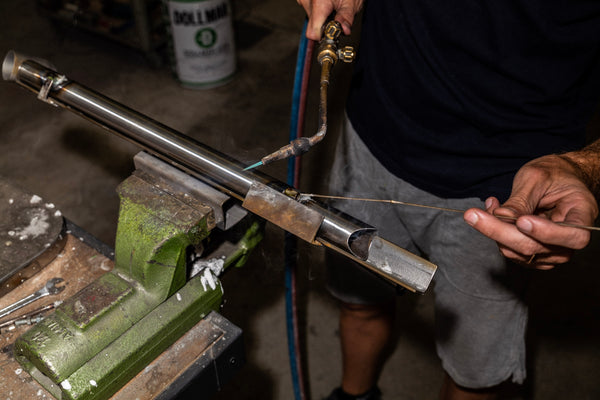

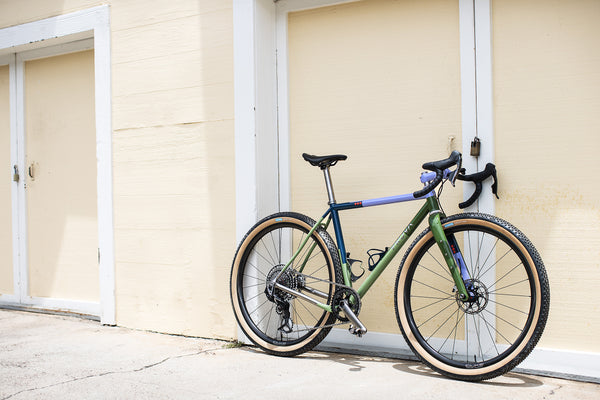
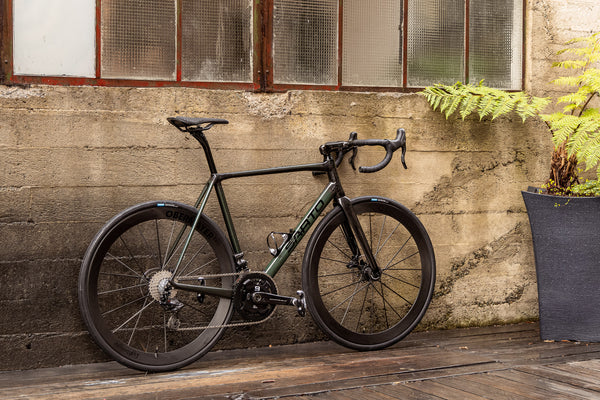


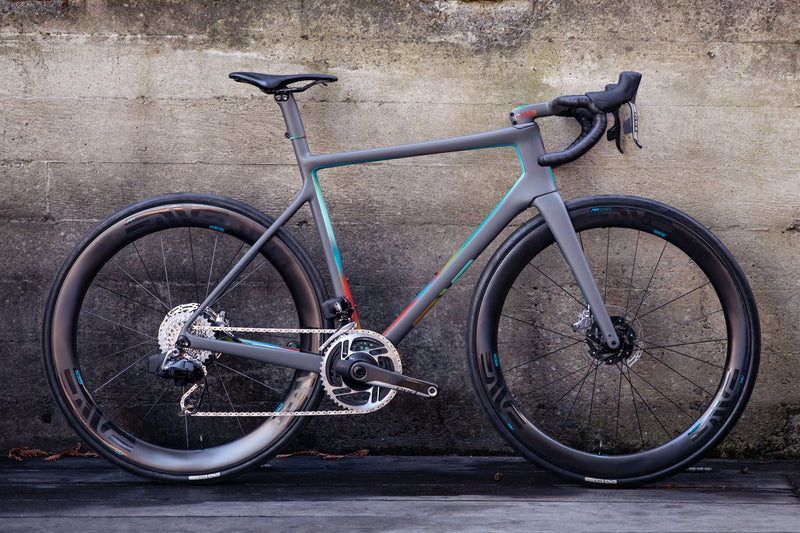

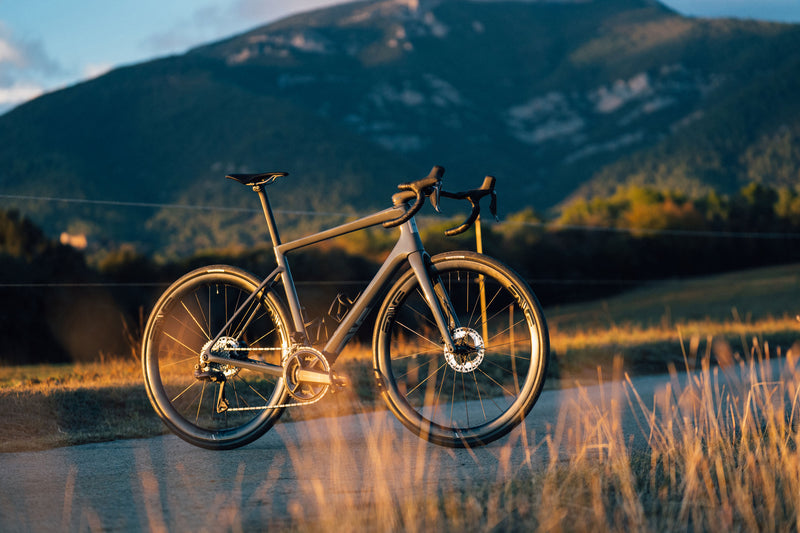
Back to Journal